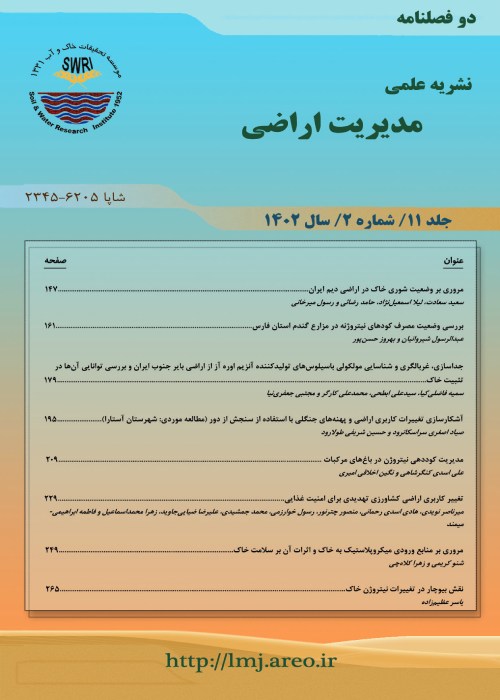Investigation of Soil Pollution and Agricultural Crops in Iran
Many factors are involved in the production of healthy crop products and their monitoring requires a process-based and systemic approach at all stages from site selection to consumption. The present paper draws upon national and international experiences reflected in reviews in order to identify the most important factors affecting crop quality; the results will be expectedly exploited toward designing future studies and developing measures to improve crop qulity. Soil is the medium in which agricultural production takes place. Although geological formations with high concentrations of pollutants (especially heavy metals) might pollute soil resources, human activities inlcuding polluting industrial activities, improper application of agricultural inputs such as pesticides, chemical and organic fertilizers (especially phosphate fertilizers and non-standard sewage sludge), undertreated effluents, and atmospheric deposits (especially in urban and peri-urban areas) are some of the factors that expose soil and agricultural production more severely to the adverse of effects of such pollutants. Water pollution cannot be divorced from that of soil as they are closely related. While certain reports attribute soil pollution in parts of Iran solely to heavy metals with geohydrological origins, long-time crop irrigation using wastewater with high pollutant loads should not be ignored as a serious source of soil pollution. It should be noted that management plays a pivotal role in growing healthy products via using healthy inputs while maintaining biodiversity but that this cannot be achieved in the absence of such healthy basic resources as: a) soil, b) water, and c) air. In other words, unhealthy crops with pollutant loads result from both production processes and the environmental factors affecting them. A review of some domestic studies revealed that extensive background experience is required in the various sampling, measurement, and reporting skills, given the high sensitivity of these processes, to arrive at sound interpretations of the results of nitrate and heavy metals concentrations reported in some domestic journals. These studies have reported high concentrations of nitrate in spinach, lettuce, and celery but lower concentrations in such fruits as tomatoes, watermelon, and cantaloupe. Crops such as cucumbers, celery, and potatoes reportedly accounted for the highest nitrate concentration exceeding the allowable nitrate limits but minimum levels in tomatoes, watermelons, and cantaloupes. This is while heavy metal contaminations in plants have not been extensively reported on. Production of crops with allowable limits of pollutants presupposes due consideration of the factors outlined above. The approach proposed in this article requires soil fertility management, proper selection of crop species and cultivars, prohibited farming in contaminated lands, and avoidance of soil exposure to atmospheric deposition and polluted waters. These goals, in turn, may be achieved through accurate monitoring of agricultural product quality and identification of high-risk farming regions.
Remediation , Pollution , Heavy metals , Nitrate , geogenic , Anthropogenic
- حق عضویت دریافتی صرف حمایت از نشریات عضو و نگهداری، تکمیل و توسعه مگیران میشود.
- پرداخت حق اشتراک و دانلود مقالات اجازه بازنشر آن در سایر رسانههای چاپی و دیجیتال را به کاربر نمیدهد.



